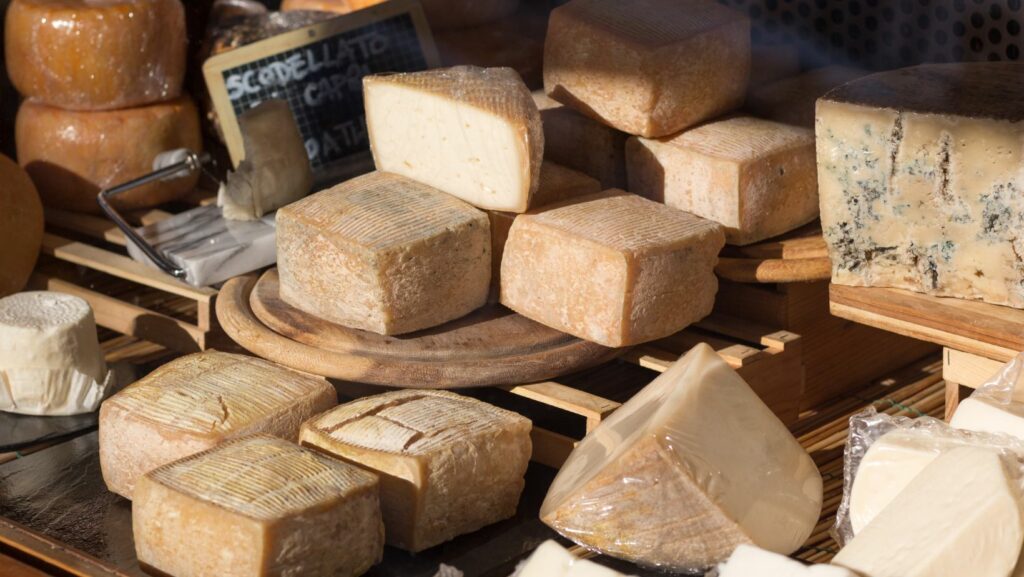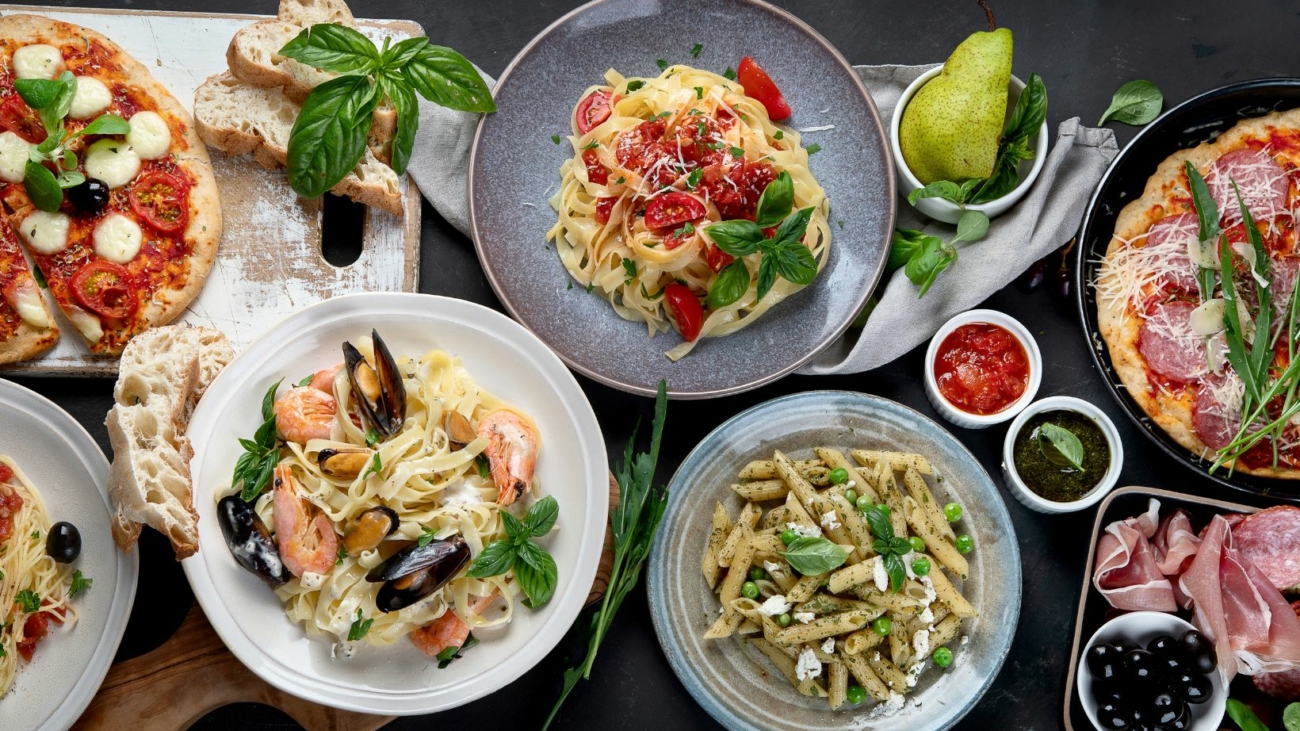Key Takeaways
- Culinary Heritage: Italian cuisine is deeply rooted in its rich history and diverse regional traditions, each area showcasing unique ingredients and recipes.
- Social Connection: Food in Italy serves as a celebration of life and community, with meals often shared among family and friends, emphasizing the importance of togetherness.
- Regional Diversity: Northern Italy is known for its hearty rice dishes like risotto, while Southern Italy boasts pasta and seafood specialties, highlighting the significance of local agricultural practices.
- Quality Ingredients: Authentic Italian cooking relies on high-quality, locally sourced ingredients, with a focus on seasonality to ensure vibrant and fresh flavors in every dish.
- Cultural Significance: Traditional dishes and cooking practices are passed down through generations, enriching familial bonds and reinforcing the role of food in cultural rituals and celebrations.
- Popular Dishes: Signature Italian dishes, such as Pizza Napoletana and Risotto alla Milanese, reflect the regional flavors and culinary techniques that define Italy’s diverse gastronomic landscape.
Italy’s culture is a vibrant tapestry woven from art, history, and, most importantly, food. Each region boasts its own culinary traditions, reflecting local ingredients and age-old recipes passed down through generations. From the sun-drenched fields of Tuscany to the bustling markets of Naples, Italian cuisine tells a story that captivates the senses and warms the heart.
Food in Italy isn’t just about nourishment; it’s a celebration of life and community. Meals are often shared with family and friends, embodying the Italian spirit of togetherness. Whether savoring a rich risotto or indulging in a slice of authentic pizza, every dish offers a taste of Italy’s rich heritage and passion for quality ingredients. As we explore the depths of Italian culinary culture, it becomes clear that food is not merely a part of life in Italy—it’s at the very center of it.
Overview of Italy Culture Food
Italy’s culinary culture embodies diverse traditions and flavors from its various regions. Each area contributes unique ingredients and recipes, showcasing local agricultural practices. For example, Northern Italy features rice dishes like risotto, while Southern Italy highlights pasta dishes and fresh seafood.
Italian food represents more than nutrition; it symbolizes celebration and community. Families and friends gather to share meals, strengthening social bonds. Dining occasions often include multiple courses, beginning with antipasti and concluding with dolci.
Regional specialties reflect Italy’s history and geography. Tuscany is famous for its hearty stews and Chianti wine. Liguria is known for its pesto and fresh herbs. Sicily offers a fusion of flavors influenced by its Mediterranean location.
Quality ingredients play a crucial role in Italian cooking. Locally sourced produce, olive oil, and artisan cheeses elevate the dining experience. Seasonality dictates menu choices, ensuring dishes remain fresh and vibrant.
Heritage and tradition guide Italian culinary practices. Recipes passed down through generations preserve authenticity and encourage familial participation in cooking. Celebrations like Feast of the Seven Fishes on Christmas Eve highlight the cultural significance of food in rituals and gatherings.
In Italy, food not only nourishes but also connects people to their history, environment, and each other.
Regional Cuisines
Italy’s regional cuisines reflect its diverse geography and cultural history. Each region showcases unique dishes that highlight local ingredients and traditional cooking methods.

Northern Italy
Northern Italy features rich, hearty flavors and varied ingredients. Rice, particularly in the form of risotto, dominates dishes from the Po Valley. Popular examples include Risotto alla Milanese, flavored with saffron, and Risotto al Nero di Seppia, made with cuttlefish ink.
Pasta also plays a significant role, with dishes such as Tagliatelle al Ragù originating from Bologna. Cheeses like Gorgonzola and Parmigiano-Reggiano are staples, enhancing the depth of flavors in dishes. Additionally, many regions utilize freshwater fish, particularly in lakeside areas.
Wines from Northern Italy, such as Barolo and Valpolicella, complement meals and highlight the region’s viticulture. Celebratory dishes like Vitello Tonnato, veal served cold with a tuna sauce, showcase the culinary creativity found across Northern Italian kitchens.
Southern Italy
Southern Italy emphasizes fresh, vibrant flavors and a connection to the sea. Pasta is central to this cuisine, with dishes such as Spaghetti alle Vongole, featuring clams, and Orecchiette con Cima di Rapa, made with turnip tops. Seasonal vegetables like tomatoes, eggplants, and bell peppers play key roles in many recipes.
Seafood is abundant, particularly in coastal areas, with specialties like Fritto Misto, a mixed fried seafood platter, or the iconic Pizza Napoletana from Naples, celebrated for its simple yet flavorful ingredients.
Olive oil is a fundamental component, often used liberally in cooking and dressing. Southern cuisine also boasts a variety of cured meats, such as Capocollo and Prosciutto di San Daniele, and fresh cheeses like Mozzarella di Bufala, representing the region’s agricultural richness. Local wines, including Aglianico and Greco di Tufo, enhance meals while reflecting the terroir of this vibrant region.
Traditional Ingredients
Italy’s culinary culture thrives on traditional ingredients that define its regional cuisines. Essential components, ranging from aromatic herbs to high-quality proteins, create the distinctive flavors of Italian dishes.
Herbs and Spices
Italian cuisine prominently features herbs and spices that enhance dishes with freshness and complexity.
- Basil: This aromatic herb is fundamental in sauces like pesto and pairs well with tomatoes.
- Oregano: Frequently used in pizza and pasta dishes, it adds a warm, earthy depth.
- Parsley: Chopped parsley complements various dishes, offering a burst of color and flavor.
- Rosemary: Commonly used in roasted meats and potatoes, it infuses a strong, woody fragrance.
- Sage: Often found in northern Italian recipes, it lends an earthy, savory quality to dishes like porchetta.
These herbs and spices signify fresh flavors, reflecting Italy’s commitment to quality and natural ingredients.
Meats and Seafood
Meats and seafood form the foundation of many traditional Italian dishes, contributing rich tastes and textures.
- Pork: Essential in cured meats like prosciutto and salami, it provides robust flavors for antipasti.
- Beef: Used in classic dishes such as Osso Buco and Tagliatelle al Ragù, it showcases regional cooking styles.
- Chicken: Often featured in rustic recipes, like Pollo alla Cacciatora, highlighting home-cooked traditions.
- Fish: Regions like Sicily and Naples emphasize fresh seafood, with dishes like Spaghetti alle Vongole showcasing local catch.
- Shellfish: Ingredients like clams and mussels appear in various preparations, celebrating coastal Italian cuisine.
These proteins illustrate Italy’s diverse culinary landscape, shaped by geography and local traditions.
Popular Dishes
Italian cuisine encompasses an array of popular dishes, each reflecting regional flavors and culinary techniques. Renowned for its variety, Italian food showcases ingredients that highlight local traditions and heritage.
Pasta Varieties
Pasta serves as a cornerstone of Italian cuisine, presenting numerous shapes and preparations. Common pasta varieties include:
- Spaghetti: Long, thin strands often paired with a range of sauces, including tomato, olive oil, or cream-based recipes.
- Farfalle: Bow-tie shaped pasta, ideal for salads and light dishes.
- Penne: Tubular pasta, frequently used in baked dishes or with hearty sauces like arrabbiata.
- Orecchiette: Small, ear-shaped pasta from Puglia, traditionally served with broccoli rabe or sausage.
Each variety lends itself to unique sauces, showcasing Italy’s love for innovation and regional ingredients.
Regional Specialties
Each Italian region boasts distinct specialties that highlight local flavors and traditions. Key regional dishes include:
- Risotto alla Milanese: A creamy rice dish flavored with saffron from Lombardy, signifying Northern Italy’s affinity for rice.
- Pizza Napoletana: Authentic Neapolitan pizza featuring a thin crust and fresh toppings, encapsulating the simplicity of Southern Italian ingredients.
- Bolognese Sauce: Originating from Emilia-Romagna, this rich meat sauce is often served with tagliatelle, emphasizing the region’s hearty fare.
- Arancini: Sicilian rice balls, stuffed with meat or cheese and fried to golden perfection, reflect the culinary richness of the island.
These specialties illustrate the diversity across Italy’s culinary landscape, where local ingredients and traditions drive flavor and creativity.
Food and Social Customs
Food in Italy plays a crucial role in social customs, particularly during family gatherings and festivals. Italian culture emphasizes sharing meals as a way to strengthen relationships.
Family Gatherings
Family gatherings often center around meals, serving as a key moment for connection. Traditional dishes are frequently shared, fostering a sense of unity and belonging. Multi-course meals, including antipasti, primi, secondi, and dolci, highlight Italy’s culinary diversity. A typical Sunday family lunch may feature Lasagna, followed by Porchetta, and end with Tiramisu. Local wines, such as Chianti or Prosecco, often complement these gatherings, enhancing the culinary experience.
During special occasions, family recipes are cherished and passed down through generations, showcasing each family’s cultural heritage. Cooking together becomes an integral part of the family tradition, as members bond over preparing beloved dishes, reinforcing the importance of food in family life.
Festivals and Celebrations
Festivals and celebrations in Italy revolve around food, weaving culinary traditions into the fabric of cultural rituals. Events like the Feast of the Seven Fishes on Christmas Eve and Carnevale’s street food highlight the significance of shared meals in communal festivities. Traditional foods play a central role, with dishes varying by region; for instance, Neapolitans might indulge in Zeppole during Saint Joseph’s Day, while Sicilians celebrate with Cannoli during Easter.
Many festivals also feature local specialties, such as truffles in Umbria, seafood in coastal areas, and wine in Piemonte. Seasonal ingredients often dictate the menu, reinforcing the connection between the landscape and culinary practices. The communal nature of these celebrations fosters social bonds, as families and friends gather to partake in the joyful atmosphere surrounding food.
Vital Part of Social Customs and Cultural Rituals
Italy’s culinary culture is a vibrant tapestry woven from regional traditions and local ingredients. Each dish tells a story of history and geography while fostering connections among families and friends. The significance of food in Italian life transcends mere nourishment; it embodies a celebration of community and heritage.
From the hearty flavors of the North to the fresh, vibrant tastes of the South, Italian cuisine showcases an impressive diversity. Seasonal ingredients and cherished recipes passed down through generations highlight the deep-rooted respect for tradition. Food is not just a necessity in Italy; it’s a vital part of social customs and cultural rituals, enriching the bonds that bring people together.
